
Bar Kokhba is a double album by John Zorn, recorded between 1994 and 1996. It features music from Zorn's Masada project, rearranged for small ensembles. It also features the original soundtrack from The Art of Remembrance – Simon Wiesenthal, a film by Hannah Heer and Werner Schmiedel (1994–95).

Lee Mark Ranaldo is an American guitarist, singer and songwriter, best known as a co-founder of the rock band Sonic Youth. In 2004, Rolling Stone ranked Ranaldo at number 33 on its "Greatest Guitarists of All Time" list. In May 2012, Spin published a staff-selected top 100 guitarist list, ranking Ranaldo and his Sonic Youth bandmate Thurston Moore together at number 1.

John Zorn is an American composer, conductor, saxophonist, arranger and producer who "deliberately resists category". His avant-garde and experimental approaches to composition and improvisation are inclusive of jazz, rock, hardcore, classical, contemporary, surf, metal, soundtrack, ambient, and world music. Rolling Stone noted that "[alt]hough Zorn has operated almost entirely outside the mainstream, he's gradually asserted himself as one of the most influential musicians of our time".
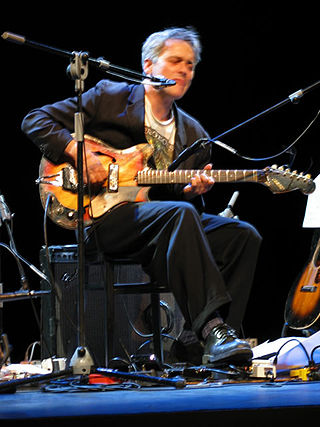
Marc Ribot is an American guitarist and composer.

Masada is a musical group with rotating personnel led by American saxophonist and composer John Zorn since the early 1990s.

Bernard Joseph Baron is an American drummer best-known for working in avant-garde jazz with Bill Frisell and John Zorn.

Medeski Martin & Wood is an American jazz fusion band formed in 1991, consisting of John Medeski on keyboards, Billy Martin on drums, and Chris Wood on bass. The band is influenced by musical traditions including funk and hip hop and is known for an unconventional style sometimes described as "avant-groove".

DJ Olive is an American disc jockey and turntablist. He is known for producing music generally in the electronic genre, with strong influences of dub, and free improvisation styles. He is widely credited with coining of the term "Illbient" in 1994. He was a founding member of the immersionist group Lalalandia Entertainment Research Corporation in 1991.

Zeena Parkins is an American composer and multi-instrumentalist active in experimental, free improvised, contemporary classical, and avant-jazz music; she is known for having "reinvented the harp". Parkins performs on standard harps, several custom electric harps, piano, and accordion. She is a 2019 Guggenheim Fellow and professor in the Music Department at Mills College.

Trevor Roy Dunn is an American composer, bass guitarist, and double bassist. He came to prominence in the 1990s with the experimental band Mr. Bungle. While performing with Mr. Bungle, Dunn would dress similar to the St. Pauli Girl. He has since worked in an array of musical styles, including with saxophonist/composer John Zorn, Secret Chiefs 3 and with his own avant-garde jazz/rock ensemble Trevor Dunn's Trio-Convulsant. He is also a member of the band Tomahawk.

Anthony John Medeski is an American jazz keyboard player and composer. Medeski is a veteran of New York's 1990s avant-garde jazz scene and is known popularly as a member of Medeski Martin & Wood. He plays the acoustic piano and an eclectic array of keyboards, including the Hammond B3 organ, melodica, mellotron, clavinet, ARP String Ensemble, Wurlitzer electric piano, Moog Voyager Synthesizer, Wurlitzer 7300 Combo Organ, Vox Continental Baroque organ, and Yamaha CS-1 Synthesizer, among others. When playing acoustic piano, Medeski usually plays the Steinway piano and is listed as a Steinway Artist.
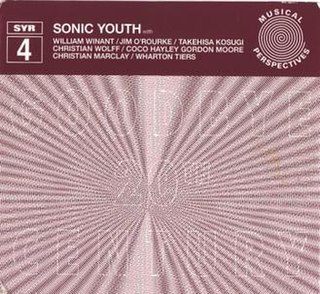
SYR4: Goodbye 20th Century is an album by American alternative rock band Sonic Youth. It is a double album of versions of pieces by avant-garde composers, performed by Sonic Youth and collaborators.

Billy Martin is an American jazz drummer, best known as a member of jazz-funk trio Medeski Martin & Wood.
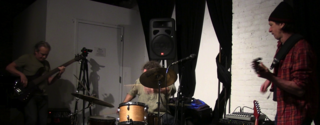
The Stone is a not-for-profit experimental music performance space located in the Greenwich Village neighborhood in New York City. It was founded in April 2005 by John Zorn, who serves as the artistic director. It was named for the late Irving Stone, an "inveterate concertgoer" in the New York City music community.

Greg Cohen is an American jazz bassist who has been a member of John Zorn's Masada quartet and worked with numerous other noted musicians for over four decades.
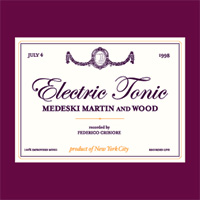
Electric Tonic is a live jazz album by Medeski Martin & Wood. It consists of completely improvised material recorded as one piece at Tonic in New York City on July 4, 1998. Described by the band's website as "electric improvisational birthday music", it had previously been available only at their live shows and through the band's online store. It is now sold online through Amazon. For the Electric Tonic concert, electric keyboards and basses were used by Medeski and Wood respectively, a counterpart to the group's fully acoustic album Tonic, recorded eight months later at the same venue, though released first in 2000.

Live at Tonic 2001 is a double album by Masada featuring two sets recorded live at Tonic during one evening in New York's Lower East Side.
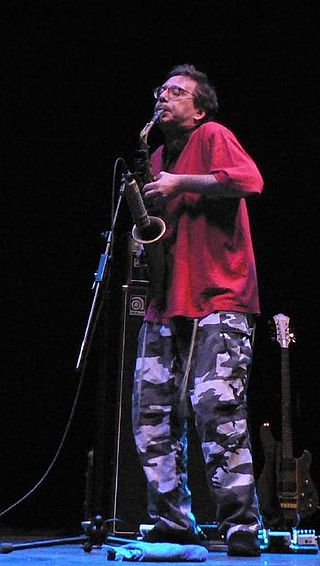
John Zorn appears on over 400 recordings as a composer or performer. This is a selection of recordings released under his name, bands he was/is part of, collaborations with other musicians, and significant albums to which he has contributed. The year indicates when the album was first released and any subsequent years if the following release included additional material.

Kenny Wollesen is an American drummer and percussionist.
The Cooler, a music and performance space, opened on Wednesday, September 22, 1993 at 416 West 14th Street in the Meatpacking District in Manhattan. The club showcased a wide variety of experimental music, Americana music, roots music, and spoken-word performers. Performances at The Cooler also included dance, film and video arts, and club parties. The Cooler blended live music, DJs, turntablists, and electronic dance music (EDM).


















